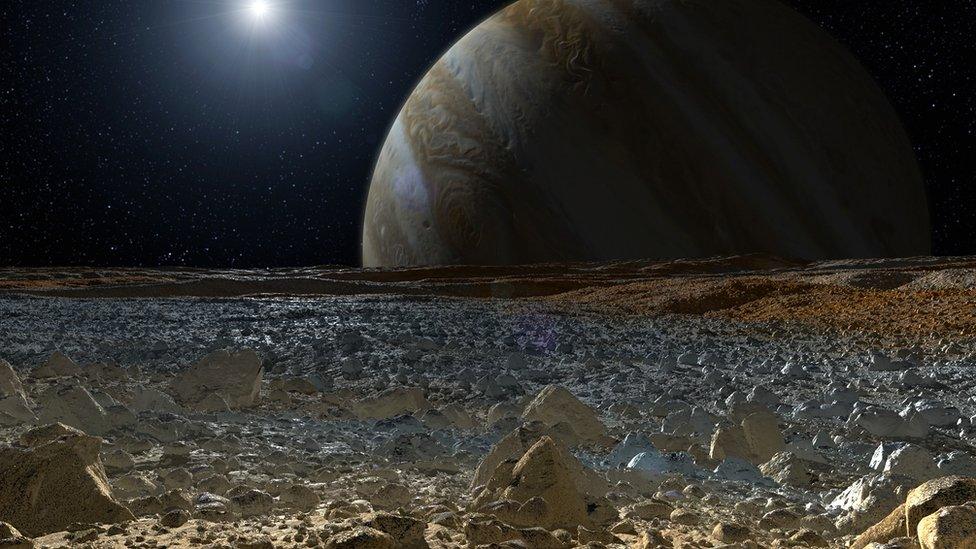Jupiter: Table salt found on planet's moon Europa
- Published
- comments

A giant ocean on one of Jupiter's moons contains salt - the kind you'd put on your fish and chips!
According to scientists, the Hubble telescope has been spying on the moon called Europa for quite some time and has identified the presence of sodium chloride - otherwise known as table salt.
Sodium chloride is what makes Earth's sea salty.
Researchers say it could mean that Europa's oceans are hydrothermally active, which means having volcanic activity.
That is exciting because it increases the chance of there being signs of extra-terrestrial life on the moon.
On Earth, life is often thought to start near hydrothermal vents.
US space agency Nasa is about to send probes to the moon - with the first mission due to take off in 2023. Until then, the only time scientists have viewed the moon up close was back in the late 1990s and early 2000s - thanks to a spacecraft called Galileo.
The yellow part of Jupiter's moon is table salt according to Nasa
Using infrared light, scientists looked for various elements.
The salt appeared most often near the patterns of ice and ridges that criss-cross the surface.
Professor Mike Brown, from the California Institute of Technology, said: "We have had the capacity to do this analysis with the Hubble Space Telescope for the past 20 years. It is just nobody thought to look."
Perhaps in the future you'll be putting salt on your dinner that comes from another world.
- Published16 June 2019
- Published18 June 2019
